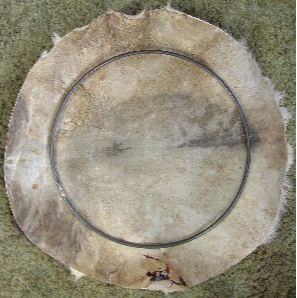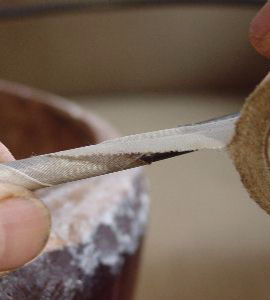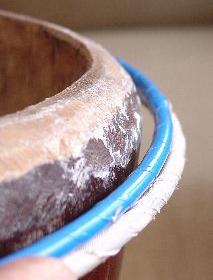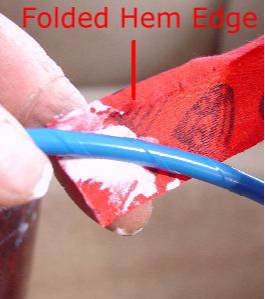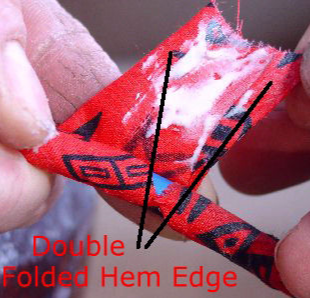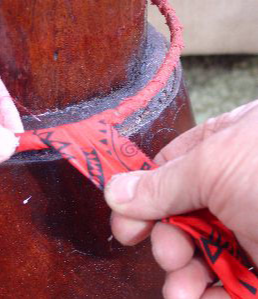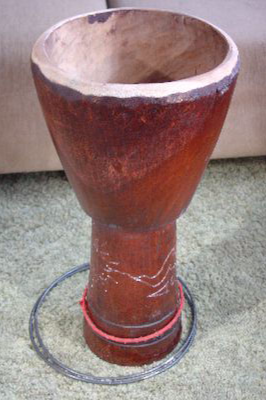
Inspect the Djembe Drum shell
You should have the djembe drum body all ready to go. Here I touched up and leveled out the head profile before beginning. To level it, put on a course level concrete floor, head down, and rotate the body until all surfaces touch. I round off with a belt sander, but you can use a good rasp as well. Many drums have the bottom ring welded on. A local welder can help you out if you need rings or to make the existing ones smaller to fit more snug.

Rework the Djembe Shell Top Edge
This is what a good head edge profile should look like. a look at your thumb sideways is a good guide. In hardwood drums this is the easiest area to carve thin and sometimes carvers try to make up for weight here, leaving a sharp uncomfortable edge. Consider lowering the whole edge down till you find thicker wood to allow some rounding. Theoretically the edge shouldn't matter, your hand should not hit it. No big consolation when you do however! This edge just has a tiny bevel on the inside to assure a clean edge for hide to take off from the wood.
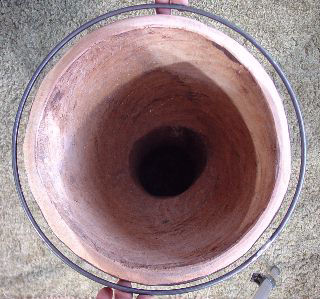
Inspect the Rings
This view shows you the typical spacing of the rings around the drum. Typically I leave about 5/8" total gap (just under 3/8" on each side). If your drum is oval, I hand bend the rings (a knee works good here)so they match the shape. If your drum has no decoration that determines front and back for you, you might consider aligning the goat skin spine on the widest sides of the oval. The thicker skin at the spine may help pull your drum back round over time.
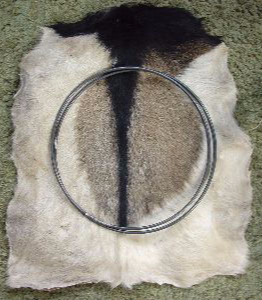
Check the skin
I check to see that the skin is big enough here. This one is marginally big enough. I wanted to use up this smallish hide. a little more room would be better, and if I have the choice I cut the circle nearer the neck end (above in photo) than the tail end. I tend to center it like this if the neck skin is a little too thick compared to the rest.
